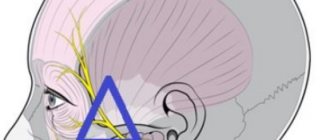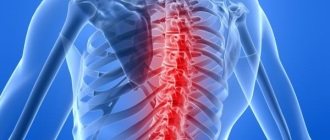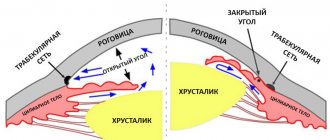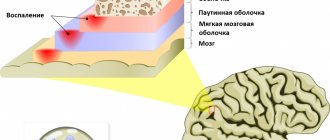Causes and diagnosis of pain in the groin area in women. The groin area occupies the lower abdominal cavity. Any sensations of discomfort in this part of the body are signs of various diseases in the body. The pain can be localized on both sides of the groin and be sharp, aching or throbbing.
Since there are a large number of organs in the groin area, pain can be caused by various types of inflammatory processes or other dysfunctions. If you experience pain of any intensity, you should definitely consult a doctor.
Unilateral groin pain
Pain in the right groin may be a symptom of inflamed appendicitis. This will be indicated by increased pain when:
- palpation in the right groin area,
- position on the right side,
- raising your left leg up,
- coughing and defecation.
An attack of appendicitis may be accompanied by a feeling of nausea, vomiting and fever.
Groin pain is not such a rare occurrence. Here a person has organs of the urinary and reproductive systems, nerve fibers, lymph nodes, muscles, etc. What to do if your groin hurts? We will tell you in this article.
Pain in the left groin may be a symptom of renal colic or hernia. Such a hernia is called an inguinal hernia and occurs when part of the intestines protrudes in the groin area as a result of weakening of the muscles of the abdominal wall. Compression of the hernial sac causes sharp and intense pain. Don't delay seeking medical help.
Renal colic provokes an acute attack of pain in the lumbar region, radiating to the groin, leg and bladder. The cause of pain is a stone that irritates the ureteral mucosa. To quickly stop an attack and get rid of pain, go to the hospital immediately. A special procedure may be needed to break the stone into smaller pieces.
Other causes of pain
Other diseases can also cause pain in the pelvic and groin areas. When hyperthermia and inflammation appear simultaneously in other joints, rheumatoid arthritis can be diagnosed.
Uncertain pain radiating to the lumbar region, knee, posterior thigh, or gluteal muscle is usually evidence of the development of avascular necrosis of the femoral head, leading over time to its atrophy.
Pain that slowly increases during movement and prolonged standing, accompanied by changes in gait, is often evidence of the formation of osteoarthritis.
Discomfort in the pelvic area occurs in women carrying a child. The reason is changes in hormonal levels, since the unborn baby needs calcium in large quantities.
Causes of groin pain in women
Pain in the lower abdomen in the groin in women is most often a symptom of so-called female diseases. Diseases of the reproductive system often occur against a background of general malaise and elevated body temperature. Palpation of the abdomen causes pain.
Pain in the lower groin, caused by an ovarian cyst, is characterized as dull and drawing. They can appear on both the left and right sides. But if the cyst has twisted or burst, the pain becomes acute. Chills and vomiting may occur.
Acute pain in the groin in women can be one of the symptoms of ectopic pregnancy. When an embryo grows in a tube, it presses on the walls throughout its growth, which causes dull periodic pain. If the fallopian tube ruptures, the pain becomes sharp and sharp. This is a wake-up call! It is accompanied by severe internal bleeding and can lead to serious consequences (drop in blood pressure, shock, anemia, etc.).
Pain in the lower groin in women, which accompanies the onset of menstruation, is nagging, aching, gradually increasing and subsiding. It usually goes away after the onset of menstruation.
Pain in the right groin in a woman can be caused by inflammation of the appendicitis, fallopian tube (salpingitis), ovary (oophoritis) and ureter (ureteritis).
Advantages of MC “HEALTHY FAMILY”
WE USE ONLY EUROPEAN, AMERICAN AND SOUTH KOREAN DRUGS ALL DRUGS ARE CERTIFIED YOUR COSMETOLOGIST HAS ABOUT 30 YEARS OF EXPERIENCE LOW PRICES FOR 100% US WE HAVE BEEN WORKING FOR COSMETOLOGICAL SERVICES OVER 1000 PATIENTS SINCE 2006 LOW COST OF BOTOX FROM 200 RUB. PER UNIT WE PROVIDE MORE THAN 5,000 COSMETOLOGY PROCEDURES PER YEAR
Cost of treatment for ovarian cysts
Ovarian cysts are a fairly common disease, which, despite a favorable course, can lead to a number of serious complications. To maintain women's health and diagnose as early as possible, you need to regularly visit a gynecologist and undergo preventive examinations.
With early diagnosis, specialists prescribe conservative treatment followed by physical therapy, but if large formations are detected, a tendency towards malignancy or other complications, surgery may be required. The cost of treatment depends on:
- Forms of education.
- Conditions of a woman.
- Presence of complications.
- The chosen treatment method.
You shouldn't skimp on your health. Contact qualified gynecologists and forget about living with pain.
Causes of pain in men
Pain in the groin in the lower abdomen in men can cause diseases associated primarily with the human reproductive system. Constant weak, aching pain in the groin in men can be one of the symptoms of diseases of the testicles and their appendages, prostate or benign adenoma.
With inflamed epididymis, pain increases while walking. Inflammation of the prostate gland is characterized by pain of a wide variety of types. They can be sharp, stabbing, aching, often chronic in nature - since many patients do not seek medical help due to fear.
These are the most common reasons why men have groin pain.
Treatment of pelvic pain
Treatment of pelvic pain is determined by the reasons that caused it. Even if causes of pain associated with damage to internal organs are excluded, patients can be helped! Modern medicine offers a number of techniques that can help eliminate not only the pain syndrome, but also the disease that caused it. These include:
- drug treatment that involves taking medications;
- various types of therapy: tissue, vascular, microcirculatory;
- elimination of biomechanical disorders of the musculoskeletal system of the pelvis;
- correction of psychological state;
- surgical interventions if there are appropriate indications or if there is no effect when using conservative treatment methods.
Thanks to the advent of modern techniques associated with blockade of nerves, nerve plexuses, large joints, as well as modern radiofrequency nerve ablation techniques, patients with chronic pelvic pain syndrome have hope of returning to a normal lifestyle. To find out the cause of pelvic pain, as well as the possibilities of modern medicine to help cope with it, please make an appointment with a pain treatment specialist at our clinic!
Make an appointment through the application or by calling +7 +7 We work every day:
- Monday—Friday: 8.00—20.00
- Saturday: 8.00–18.00
- Sunday is a day off
The nearest metro and MCC stations to the clinic:
- Highway of Enthusiasts or Perovo
- Partisan
- Enthusiast Highway
Driving directions
Other causes of groin pain
If you have pain in the groin area, pay attention to the condition of the lymph nodes, femoral arteries, intestines, etc. The inflamed lymph node usually becomes denser and increases in size. The pain is localized around the inflamed node, and its intensity depends on the stage of inflammation.
Intestinal diseases, in addition to pain, can be accompanied by: stool disturbances, accumulation of gases, the urge to defecate when the intestines are empty, etc. These disorders may accompany pain in the groin on the right and left. Such diseases include intestinal infections, poisoning, intestinal obstruction (the pain will be of a cramping nature).
Sometimes the cause of pain may not be only a disease. In people who exercise intensely, pain occurs due to a sprained ligament or muscle injury. Typically, such pain is characterized as aching (trauma) or sharp (sprain).
What to do if your leg hurts in the groin? The reason for this may be radiating pain. This is the one that is transmitted to an area distant from its source. In this case, you need to look for the root cause. For example, with osteochondrosis, the source of pain is localized in the lower back. Due to a pinched nerve, pain may radiate to the groin area.
Another cause of pain may be inflammatory and degenerative processes in the hip joint. These are various types of arthritis, arthrosis and damage to joint tissue by their immune cells. The disease is characterized by constant pain in the joint, which intensifies during movement.
Which doctor should I contact?
A visit to the doctor is simply necessary if the pain does not stop for a long time and is accompanied by fever, numbness of the lower extremities, nausea, or if it occurs as a result of injury. If you want to be sure that you will be correctly diagnosed and treated at a high quality level, contact the CELT clinic. In order to become our patient and get rid of pain, it is not necessary to have a Moscow residence permit. Contact your doctor, and depending on the nature of the pain, the cause of its occurrence and accompanying symptoms, you will be referred to one of our specialists:
- pain management specialist;
- traumatologist-orthopedist;
- rheumatologist;
- neurologist;
- oncologist;
- physiotherapist;
- gynecologist;
- to a urologist.
What to do for groin pain
If you have pain in the groin, first of all, diagnosis is important:
- Pay attention to which side it hurts and where it radiates.
- Determine the nature and intensity of pain.
- Pay attention to the frequency of the urge to urinate or defecate.
- Measure your body temperature (the inflammatory process will be accompanied by an increase in temperature).
- Pay attention to your general health, the presence of nausea.
- Measure your blood pressure.
- If you're an athlete, reconsider your workout intensity.
- If you are a woman, pay attention to the timing and nature of your period.
- Be sure to visit a doctor if pain persists.
Remember, sharp pain in the groin is a reason to immediately visit a doctor. Such pain is unlikely to go away on its own.
Nagging pain in the groin in women should prompt you to visit a gynecologist.
Pain in the left groin may indicate a hernia, a pinched nerve in the lower back, inflamed lymph nodes or problems with the intestines; it is worth visiting a therapist.
Why is it so important to see a doctor promptly?
Painful symptoms in the pelvic area can signal a number of diseases of the genitourinary and musculoskeletal systems, as well as the gastrointestinal tract. Taking painkillers will only temporarily eliminate the symptom, but the cause that caused it will not be eliminated - and the disease will continue to develop, which is dangerous for health and life. By consulting a doctor in a timely manner and undergoing a diagnostic test, the patient will find out the cause of the pain and, together with the doctor, will be able to direct efforts to eliminate it, avoiding much more serious consequences, irreversible processes, and sometimes even surgical intervention. Do not delay your visit to the doctor under any circumstances if:
- pain symptoms have an intense paroxysmal nature;
- an admixture of blood is found in the urine or stool;
- internal organs hurt;
- there is headache, nausea, high body temperature;
- Women experience uterine bleeding.
Treatment of groin pain
Diseases of the genitourinary system require adherence to a gentle diet in order to relieve the body a little and help it direct all its strength to fight the pathology. As a rule, the consumption of fatty, spicy and fried foods is limited. There is also a ban on the consumption of alcoholic beverages, coffee, and sweet carbonated water. Lean meat and fish are allowed (in limited quantities), lots of vegetables and fruits. It is recommended to cook food using steam. Break your meals into 5-6 small portions. All this will alleviate the symptoms of the disease.
For pain caused by bloating, eliminate dairy products, flour products (especially white flour), beans and cabbage from your diet.
For muscle pain, limit the load on the area of the injured muscle, provide it with rest and perform massage movements.
If you are prone to urolithiasis, drink a lot. Water reduces the concentration of uric acid and salts in the urine. Drink up to 10 glasses per day.
Remember that proper nutrition can solve and prevent many problems.
Treatment
Any of the listed diseases that provoke pain in the pelvic and groin area requires complex treatment. In addition, the sore leg needs rest and frequent rest.
Medicines
Usually, to relieve pain in the pelvic area, treatment with anti-inflammatory drugs is indicated - Indomethacin, Diclofenac, Ibuprofen. They can be used in tablet and ointment form.
To relieve muscle spasms, taking muscle relaxants is indicated. In case of severe clinical picture, steroids are prescribed. Diuretics help remove swelling in the tissues. Treatment with glucocorticosteroids (Prednisolone, Methylprednisolone, Dexamethasone) and chondroprotectors (Glucosamine, Chondroitin sulfate) is also indicated.
To activate blood circulation in the leg, Pentoxifylline and Tivortin are prescribed. If the pathology is accompanied by a purulent process, antibiotics are prescribed:
- macrolides (Erythromycin);
- cephalosporins (Cefoperazine, Cefazolin);
- fluoroquinolones (Moxifloxacin).
Massage
To carry out this procedure, you need to contact a specialist once every 6 months. The course of treatment for the causes of hip diseases is 10 sessions.
Physiotherapeutic procedures
Depending on the symptoms of the disease, the following treatment for the hip joint is prescribed:
- electrophoresis with Novocaine to increase the penetration ability of the drug into the damaged area;
- magnetotherapy;
- UHF;
- laser therapy, which has an anti-inflammatory, analgesic and resorption effect.
Exercise therapy
Physical therapy is prescribed after acute symptoms have been relieved and severe pain has been eliminated. The gymnastics is quite simple, it consists of abduction, adduction, flexion and extension of the leg. Initially, the exercises should be performed under medical supervision. It is optimal to perform gymnastics in a pool with warm water.
Operation
If blood or fluid is found in the joint cavity, drainage and rinsing with a special antibacterial solution is recommended.
In a more serious situation, hip replacement is indicated, which consists of replacing the destroyed joint with an artificial analogue. At the end of the surgical intervention and rehabilitation period, physical activity is resumed, which allows the person to return to their normal lifestyle.
Various diseases can provoke pain in the pelvic and groin areas. The main thing is to seek help from a doctor in a timely manner so that he can correctly diagnose and prescribe appropriate treatment.
Why does it hurt in the pubic area in women?
Traumatic injuries
The cause of sudden pain can be bruises of the pubic symphysis and fractures of the anterior pelvis.
With bruises, the pain syndrome develops after a blow or fall, is moderate, can be accompanied by local swelling, and sometimes bruising. The range of motion is preserved completely or almost completely, the support function is not impaired. All symptoms disappear within 1-2 weeks. With fractures, there are limitations in movement, impaired support of varying degrees, and the inability to raise the straight leg on the side of the injury from a lying position. In women with damage to the superior branch of the pubic bone and the anterior pelvic semi-ring, the pain increases with palpation, compression, and movements of the lower limb on the affected side. In case of ruptures of the symphysis pubis, the patient takes a forced position with the limbs slightly bent and brought together. The pain increases sharply when you try to spread your legs.
Osteomyelitis
Inflammation of the pubic bone occurs due to infection due to surgical interventions, deep wounds in the pubic area, purulent processes in the surrounding tissues. The pain quickly intensifies against the background of increasing swelling, redness of the skin, and deterioration of the general condition. The amount of discharge increases, it becomes purulent in nature. With osteomyelitis, a woman complains of tugging, tearing, throbbing pain in the pubic area. Fever and signs of severe intoxication are detected.
New growths of the pubic bone
The pelvic bones are a common location for benign and malignant tumors. With chondroblastomas, osteomas and osteochondromas, the pain is not intense, slowly increasing over a long time. Chondrosarcomas and metastatic neoplasia are characterized by rapid progression of pain. Initially, the woman complains of minor aching or nagging pain in the pubic area. After a few months, the pain becomes severe, constant, unbearable, and can only be eliminated with narcotic analgesics.
Pregnancy period
Minor pain in the pubic area can normally be observed in the 2nd and 3rd trimesters of pregnancy. It is caused by an increase in the size of the fetus, preparing the body for the birth of a child. If the pain intensifies at night, during sexual intercourse, walking up stairs, spreading the legs and putting pressure on the pubic area, symphysitis should be suspected. Intense pain, inability to stand, walk and lift legs indicate the development of symphiolysis - damage to the ligaments and separation of the pubic bones.
Pelvic fractures in pregnant women develop as a result of trauma in half of the cases. In other women, they become a consequence of systemic diseases (osteoporosis, osteodystrophy) or local processes (tuberculosis, osteomyelitis). In the absence of provoking pathologies, spontaneous damage occurs extremely rarely. The classic clinical picture of a fracture is observed: intense pain in the projection of the pubis or other areas of the pelvis, forced position, limited function of the limbs.
Pain in the pubic area
Gynecological diseases
Pain in the pubis and suprapubic region is mainly noted when the uterus is affected, which, like the symphysis pubis, is located in the midline. Determined for the following pathologies:
- Acute endometritis.
The pain syndrome occurs acutely simultaneously with the appearance of leucorrhoea with an unpleasant odor, chills, general hyperthermia, tachycardia, and pain when urinating. It is especially difficult in the presence of an intrauterine device. - Chronic endometritis.
The pain is not intense, aching. Often combined with dyspareunia. They are supplemented by uterine bleeding, menstrual disorders, bloody or serous-purulent discharge from the genital tract. - Postpartum endometritis.
In mild cases it develops within 5-10 days. Low-grade fever, pain above the womb, slight tachycardia, moderate lochia mixed with blood are noted. In severe cases, it manifests itself within 2-3 days. Chills, fever, severe pain above the pubis, profuse bloody-purulent cloudy lochia with a fishy odor are detected. - Endometriosis.
Painful sensations are found in 15-25% of women and can be localized only above the pubis or be diffuse. They are permanent or worsen in the premenstrual period. Other possible symptoms are dysmenorrhea, menorrhagia, pain during sexual intercourse, urination and defecation.
Patients with adnexitis, salpingitis and ovarian cysts more often complain of pain in the right or left iliac zone. Possible irradiation into the womb and suprapubic region. In women with cysts, pain increases with internal bleeding, suppuration, rupture of the membrane or torsion of the leg of the cystic formation.
Nagging pain in the suprapubic region with delayed menstruation and engorgement of the mammary glands may indicate an ectopic pregnancy with the attachment of the fertilized egg in the uterine part of the fallopian tube, the rudimentary horn of the uterus or the abdominal cavity. When the ovum ruptures, the pain increases sharply, radiates to the lower back, legs and anus, and is accompanied by bleeding or spotting, weakness, tachycardia, and loss of consciousness.
With cancer and sarcoma of the uterus in the early stages, bleeding and menstrual irregularities are observed. Subsequently, paroxysmal cramping pain occurs over the womb, followed by the discharge of pathological discharge from the vagina. In the later stages, the pain becomes intense and constant. There are dysfunctions of neighboring organs and cancer cachexia.
Pathologies of the urinary system
Pain above the pubis is typical for bladder diseases. Observed in diseases such as:
- Acute cystitis.
Cutting and aching pains appear suddenly. An increased frequency of urges, pain, pain and burning during urination, sometimes blood in the urine, lower back pain, and an increase in temperature to subfebrile levels are detected. - Chronic cystitis.
Diagnosed with 3 or more exacerbations in a year or 2 or more exacerbations in six months. It is accompanied by the same symptoms as acute cystitis, but the manifestations persist longer and often have a wave-like character. - Bladder cancer.
Dysuria, pain in the pubic area, groin and sacrum is preceded by hematuria. The pain syndrome is initially insignificant or moderate, observed only when the detrusor is filled, and subsequently becomes intense, painful, and constant. - Bladder tuberculosis.
Develops against the background of kidney tuberculosis. It manifests itself as constant aching pain in the suprapubic area, frequent painful urination with a feeling of incomplete emptying of the bladder, imperative urges, periodic blood in the urine, malaise, increased fatigue, low-grade fever, and loss of body weight. - Bladder stones.
Pain in the lower abdomen and above the pubis is minor at rest. They increase sharply when changing body position, during urination, which is associated with the movement of stones and traumatization of the mucous membrane. Possible irradiation to the perineum, labia, upper thighs.








